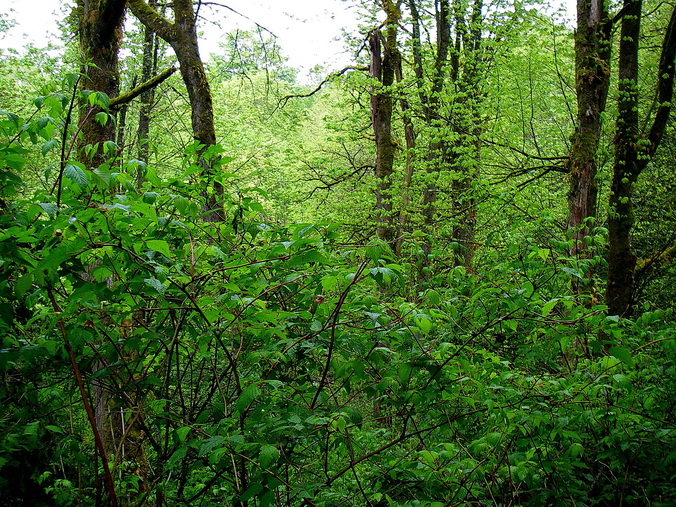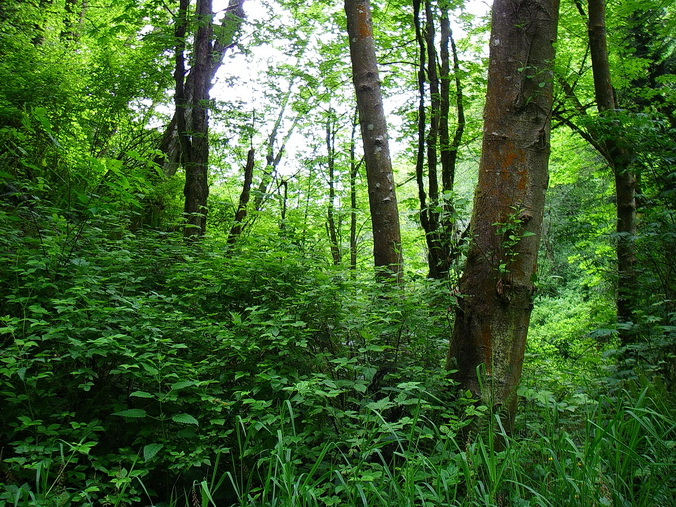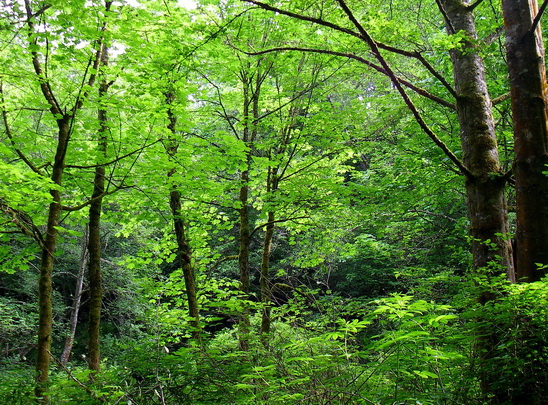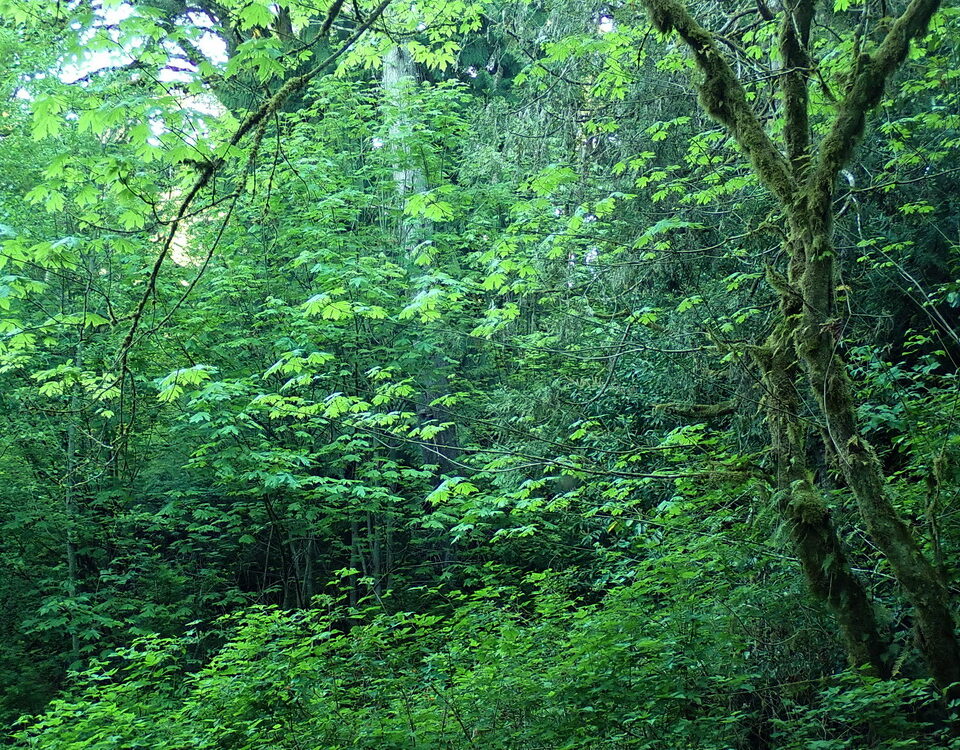Recently, I was enjoying a few relaxing moments soaking up the bright green light of the May forest. I was thinking about the article “Why Plants are Green ” by Rodrigo Perez Ortega and the paper it was based on (here). I wondered if the energizing effects of forest bathing could have anything to do with the fact that the intensity of sunlight peaks in the green spectrum?
Probably not. I found no articles on the web suggesting that the high energy of green photons might affect humans. The search for an answer, however, led me on a deep dive into pigments, wavelengths, and the light-harvesting aspect of photosynthesis which I share in this post, along with some pictures of the green deciduous forest in May.


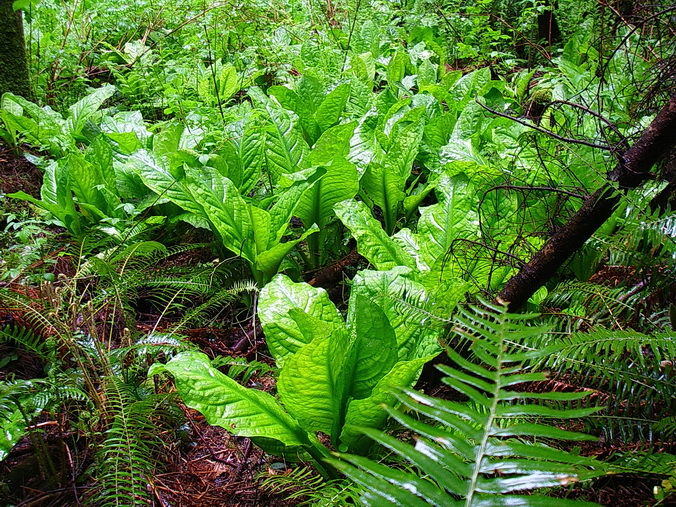
Light-Harvesting Antennas
To use an analogy, pigments are to light waves as antennas are to radio waves. In fact, the complex arrays of chlorophyll pigments and proteins in chloroplasts that absorb energy from sunlight are basically light harvesting antennas. Like some radio antennas, the light-harvesting antennas of plants are tuned to specific wavelengths, absorbing nearly 100% of the light in the blue and red spectrums but practically none in the green spectrum. The green we see in leaves is the light not being used by the plants.
Solar Irradiance Varies by Wavelength
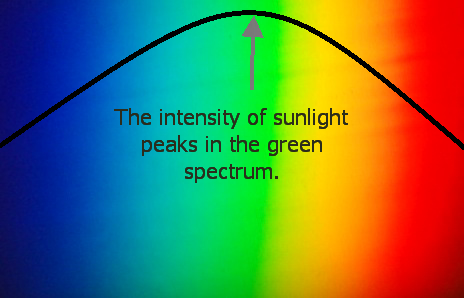
The intensity of sunlight (solar irradiance) is the rate at which its energy is delivered over a given area, and that rate varies by its wavelength. As the lengths of light waves increase across the spectrum from blue to green, the solar irradiance increases. The peak intensity is reached in the green spectrum and then gradually declines as the lengths of light waves increase from green to red.
Green Light is Too Intense for Efficient Photosynthesis
Why would plants be using the less intense blue and red light instead of green? In short, scientists have determined that green light is too intense for efficient photosynthesis in a “noisy” world. Some of the noise is external to plants because the intensity of sunlight varies from one moment to the next, often abruptly. Some of the noise is internal, because much more is going on in plants and in their cells than just photosynthesis. The challenge for the cell’s photosynthetic equipment is to achieve a smooth, steady production of carbohydrates in a noisy world. The solution evolved by plants is to scatter the light with the most intense energy, the green light, and absorb the less-intense blues and reds.
